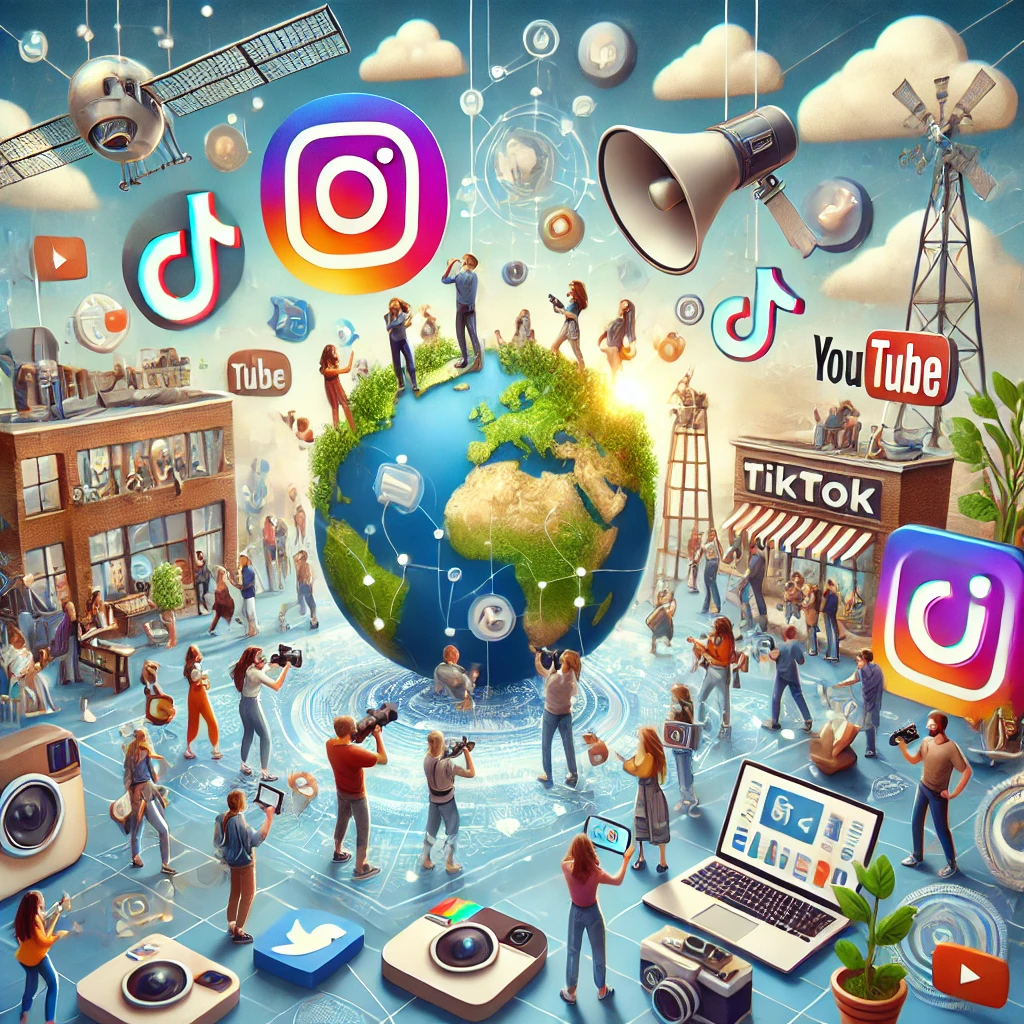In today’s digital marketing world, influencer marketing has evolved dramatically. While big-name celebrities and influencers once dominated the space, the focus has shifted toward a more effective and relatable force: micro-influencers. With audiences ranging between 1,000 to 100,000 followers, these small-scale creators have emerged as one of the most valuable assets for brands. As we move into 2024, businesses are increasingly leveraging micro-influencers to boost brand awareness, drive engagement, and foster genuine connections with their target audience.
So, what’s driving this shift from macro to micro? Let’s explore why micro-influencers are the future of influencer marketing and how they’re delivering big results for businesses in 2024.

Authenticity and Trust with Niche Audiences
One of the most significant advantages micro-influencers offer is authenticity. Unlike mega-influencers or celebrities, micro-influencers often have closer relationships with their followers. Their content feels more genuine and relatable because they interact directly with their community, creating a stronger sense of trust. Followers see micro-influencers as real people who share their interests and values rather than just paid advertisers.
In 2024, consumers are becoming more skeptical of overt advertisements, especially those that feel disconnected from their everyday lives. Micro-influencers, however, have built loyal communities around specific niches—whether it’s fitness, beauty, tech, or lifestyle—making them credible voices within those spaces. For brands, partnering with these influencers means gaining access to a highly engaged audience that genuinely values the opinions of the creator.
Higher Engagement Rates
It’s not just the size of the following that matters, but the quality of engagement. Micro-influencers typically boast higher engagement rates compared to macro-influencers. This means their audience is more likely to like, comment, share, and interact with their content, resulting in a more meaningful connection with the brand they promote.
According to a study by Influencer Marketing Hub, micro-influencers can generate up to 60% more engagement than their larger counterparts. This is especially true in 2024, as algorithms on platforms like Instagram, TikTok, and YouTube continue to prioritize engagement over reach. For brands, this translates to better visibility and more organic conversations around their products or services.
Cost-Effective Campaigns with Higher ROI
While partnering with high-profile influencers can be costly, micro-influencers present a more budget-friendly option without sacrificing impact. Because their rates are lower, brands can often collaborate with multiple micro-influencers for the same price they would pay a single macro-influencer, leading to a broader reach across various segments of their target audience.
In 2024, many businesses—particularly startups and smaller brands—are opting for micro-influencer collaborations to maximize their marketing budget. By investing in several micro-influencers who align closely with their brand values and audience, companies can achieve a higher return on investment (ROI) and gain diverse content that speaks authentically to their audience.
Targeted Campaigns for Specific Audiences
Micro-influencers often cater to specific, niche audiences. This allows brands to run more targeted marketing campaigns, ensuring that their message reaches the exact demographic they’re trying to engage. For instance, a brand specializing in eco-friendly products can collaborate with micro-influencers known for their sustainability content, creating a natural alignment that resonates with environmentally conscious consumers.
In 2024, brands are increasingly moving away from the one-size-fits-all approach to influencer marketing. Instead, they are focusing on reaching micro-communities that are highly engaged and interested in specific topics. This level of targeting helps brands craft personalized marketing strategies that connect with potential customers on a deeper level, improving the chances of conversions.
Content Creation That Feels Authentic
In an era of polished, highly produced ads, micro-influencers are known for their unfiltered, authentic content. Their posts often feel more genuine and less scripted, which resonates with modern consumers who crave realness and relatability. Micro-influencers typically create content that aligns with their lifestyle, seamlessly integrating brand promotions in a way that feels natural to their audience.
For brands in 2024, this authenticity is crucial. Consumers, particularly younger generations like Gen Z, are increasingly drawn to brands that feel transparent and relatable. Micro-influencers are able to create this kind of content, providing a fresh, user-generated feel that can outperform traditional ad campaigns in terms of trust and effectiveness.
Long-Term Brand Partnerships
Because of their smaller, more engaged communities, micro-influencers tend to have more flexibility and willingness to establish long-term partnerships with brands. These ongoing collaborations allow for consistent promotion of the brand across multiple posts, helping to build trust and familiarity over time.
For businesses, fostering long-term relationships with micro-influencers is a key trend heading into 2024. As brands work more closely with these creators, they can ensure that their marketing messages are consistently reinforced, which leads to stronger brand loyalty and higher customer retention.
Conclusion
As digital marketing strategies evolve, micro-influencers have proven that bigger is not always better. Their authenticity, niche appeal, higher engagement rates, and cost-effectiveness make them an invaluable asset to brands looking to connect with consumers on a personal level.
In 2024, micro-influencers will continue to shape the future of influencer marketing, offering brands the opportunity to run highly targeted, effective campaigns that foster genuine connections. Businesses that embrace this trend will be well-positioned to drive meaningful results in the increasingly competitive digital landscape.
Partnering with micro-influencers is no longer just a trend—it’s a vital strategy for brands looking to thrive in the future of marketing.
